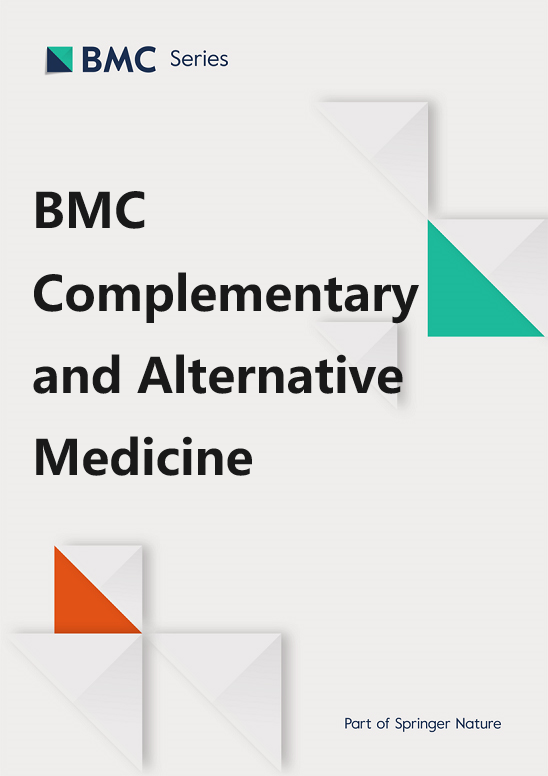Evaluating anthelmintic, anti-platelet, and anti-coagulant activities, and identifying the bioactive phytochemicals of Amaranthus blitum L.
IF 3.4
2区 医学
Q1 Medicine
引用次数: 0
Abstract
Highlighting affordable alternative crops that are rich in bioactive phytoconstituents is essential for advancing nutrition and ensuring food security. Amaranthus blitum L. (AB) stands out as one such crop with a traditional history of being used to treat intestinal disorders, roundworm infections, and hemorrhage. This study aimed to evaluate the anthelmintic and hematologic activities across various extracts of AB and investigate the phytoconstituents responsible for these activities. In vitro anthelmintic activity against Trichinella spiralis was evaluated in terms of larval viability reduction. The anti-platelet activities were assessed based on the inhibitory effect against induced platelet aggregation. Further, effects on the extrinsic pathway, the intrinsic pathway, and the ultimate common stage of blood coagulation, were monitored through measuring blood coagulation parameters: prothrombin time (PT), activated partial thromboplastin time (aPTT), and thrombin time (TT), respectively. The structures of isolated compounds were elucidated by spectroscopic analysis. Interestingly, a previously undescribed compound (19), N-(cis-p-coumaroyl)-ʟ-tryptophan, was isolated and identified along with 21 known compounds. Significant in vitro larvicidal activities were demonstrated by the investigated AB extracts at 1 mg/mL. Among tested compounds, compound 18 (rutin) displayed the highest larvicidal activity. Moreover, compounds 19 and 20 (N-(trans-p-coumaroyl)-ʟ-tryptophan) induced complete larval death within 48 h. The crude extract exhibited the minimal platelet aggregation of 43.42 ± 11.69%, compared with 76.22 ± 14.34% in the control plasma. Additionally, the crude extract and two compounds 19 and 20 significantly inhibited the extrinsic coagulation pathway. These findings extend awareness about the nutritional value of AB as a food, with thrombosis-preventing capabilities and introducing a promising source for new anthelmintic and anticoagulant agents.评价马齿苋的抗蠕虫、抗血小板和抗凝血活性,并鉴定其生物活性植物化学物质
突出经济实惠、富含生物活性植物成分的替代作物对于促进营养和确保粮食安全至关重要。Amaranthus blitum L.(AB)就是这样一种作物,具有治疗肠道疾病、蛔虫感染和出血的传统历史。本研究旨在评估马齿苋各种萃取物的驱虫和血液学活性,并调查导致这些活性的植物成分。体外抗蠕虫活性是根据幼虫存活率的降低来评估的。根据对诱导血小板聚集的抑制作用评估了抗血小板活性。此外,通过测量血液凝固参数:凝血酶原时间(PT)、活化部分凝血活酶时间(aPTT)和凝血酶时间(TT),分别监测了对血液凝固的外在途径、内在途径和最终共同阶段的影响。通过光谱分析阐明了分离化合物的结构。有趣的是,分离出了一种以前未曾描述过的化合物(19),即 N-(顺式-对香豆酰基)-ʟ-色氨酸,并与 21 种已知化合物一起进行了鉴定。所研究的 AB 提取物在 1 mg/mL 的浓度下具有显著的体外杀幼虫剂活性。在测试的化合物中,化合物 18(芦丁)的杀幼虫活性最高。此外,化合物 19 和 20(N-(反式对香豆酰基)-ʟ-色氨酸)可在 48 小时内诱导幼虫完全死亡。粗提取物的血小板聚集率最低,为 43.42 ± 11.69%,而对照血浆的血小板聚集率为 76.22 ± 14.34%。此外,粗提取物和两种化合物 19 和 20 还能明显抑制外凝血途径。这些发现扩大了人们对 AB 作为食物的营养价值的认识,它具有预防血栓形成的功能,并为新的抗虫药和抗凝血剂提供了一个前景广阔的来源。
本文章由计算机程序翻译,如有差异,请以英文原文为准。
求助全文
约1分钟内获得全文
求助全文
来源期刊

BMC Complementary and Alternative Medicine
INTEGRATIVE & COMPLEMENTARY MEDICINE-
CiteScore
7.00
自引率
0.00%
发文量
0
审稿时长
3 months
期刊介绍:
BMC Complementary Medicine and Therapies is an open access journal publishing original peer-reviewed research articles on interventions and resources that complement or replace conventional therapies, with a specific emphasis on research that explores the biological mechanisms of action, as well as their efficacy, safety, costs, patterns of use and/or implementation.
 求助内容:
求助内容: 应助结果提醒方式:
应助结果提醒方式:


